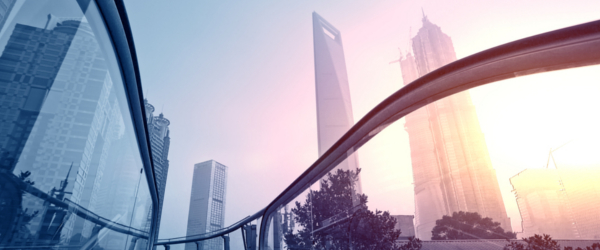
We’ve seen the rise of the smart device and experienced firsthand how IoT enables us to do things like to remotely control our homes. But now IoT is taking smart to a whole new level, with smart buildings rising across the world.
From windows that absorb day light, to buildings that spin around to get the the best solar exposure, here are ten of the smartest smart buildings across the world.
1. 122 Leadenhall Street, London
One of London’s latest acquisitions, the Leadenhall Building features a whole spec of intelligent energy saving specs. The building has 293 energy meters installed to monitor light usage. The square-mile ‘hot-spot’ also boosts low-flow water fixtures and fittings and the external glazing features vents every seventh floor to let air circulate freely, reducing the need for AC systems.
2. Capital Tower, Singapore
One of the oldest-modern smart building in the world, the Capital Tower in Singapore has been setting trends for the past 15 years.
With construction completed in 2000, the building features a state-of-the-art fully integrated intelligent building management system (IBMS) for its services and facilities. The 254 meters tall Capital Tower boasts a highly intelligent car park management with real-time status display at the entrance of the car park.
But that’s not all, if you catch a lift to reach any of the 52 floors, you’ll be given real-time news bulletins on dual LCE panels. Energy was also taken into account, putting CT at the front of other skyscrapers due to its eco-friendly system management.
3. David Brower Centre, California
Like most smart buildings of today, the David Brower Centre in California futures a whole set of features to reduce energy bills and use as much as solar energy as possible.
All offices are designed to receive daylight, dropping the need for artificial light. A system of photovoltaic panels, which double as a sun shade device, controls the energy needs of the building.
The infrastructure has been installed with Co2 sensors that can automatically control the need for more fresh air.
4. Port of Portland, Oregon
The new Port of Portland building on the Northwest coast of the US features a world-class wastewater system. Boasting 200,000-square-foot, water use dropped 75% by utilising all wastewater generated by the building’s 500 employees.
The Living Machine system, which has been granted a LEED Platinum certification for the building, produces high quality water that is reused to flush toilets and supply the cooling towers in the building.
5. SAP America Headquarters, Pennsylvania
With an expansive green roof, the headquarters of SAP America are the largest LEED Certified Platinum building in the State of Pennsylvania.
Comprising 210,000 square-foot of space, the office building designed by FXFOWLE Architects also features ice cooling and rainwater collection. The rainwater collection feature stores up to 50,000-gallons of water into a cistern that supplies water for landscape irrigation and the flushing of toilets in some of the building’s bathrooms.
Furthermore, the building includes energy-efficient geothermal wells, calibrated lighting systems, and under-floor air distribution to reduce energy use.
6. Terminal B, Norman Y Mineta San Jose International Airport
Airports could be listed as smart buildings by themselves, but Terminal B at Mineta San Jose International Airport is smarter than others. The building displays state of the art tech specs with a modern system for self-checking and bag screening.
A new concept introduced in the terminal by Fentress Architects is the "Air Chair", an electronic charging station for passengers, as well as a ventilation system that enables the airport to save on energy costs. The terminal opened in 2010 and display’s America’s largest digital art collection
7. The New York Times, NY
The paper is old – 164-years-old – but the building is new. Completed in 2007, The New York Times’ headquarters feature the first high rise curtain wall with ceramic sunscreen to be built in the United States.
This curtain is made out of hundreds of ceramic tubes that are filled with ultra clear low iron glass to create a curtain wall that reflects light and changes colour throughout the day saving energy.
8. Beijing Airport, T3 Terminal
Built in the build-up of to the 2008 Olympic Games, Beijing’s International Airport is by itself a state of the art structure. Terminal 3 is fully packed with 25 thousand monitors and sensors to ensure both security and energy-friendly usage of resources in one of the most polluted cities in the world.
With 10 workstations to control water, heating and air flows the terminal’s Schneider Electric automation system, supplied by IBM, boasts more than 3,000 DDC controllers, more than 900 sets of special controllers and more than 1600 VAV fan coil units.
9. Musée du quai Branly, Paris
Paris and its vast collection of museums got a big bigger and smarter addition in 2006, when the Musée du quai Branly opened its doors and featured a ‘green wall’ covered with living plants that can freely grow.
The wall covers 800 square meters of exterior facade and 150 square meters of inside walls. It’s made out of 15,000 plants, with 150 varieties from all over the world. The project was designed to improve air quality throughout the infrastructure and to reduce energy use.
10. The Gates’ Home, Washington
And where else could we end this journey around the world’s smartest buildings if not in Bill Gates’ residence. What might be one of the smartest private homes in the world, the house can remember programmed prefrences, such as music, lighting, temperature and art, for the individuals living there. This means that if you walk into a room, that room will change a host of elements to suit your choice. The rooms literally change.
This is achieved with a touch screen system installed on the walls of ‘Gates’ fort’, with a set of pins wore by visitors.






